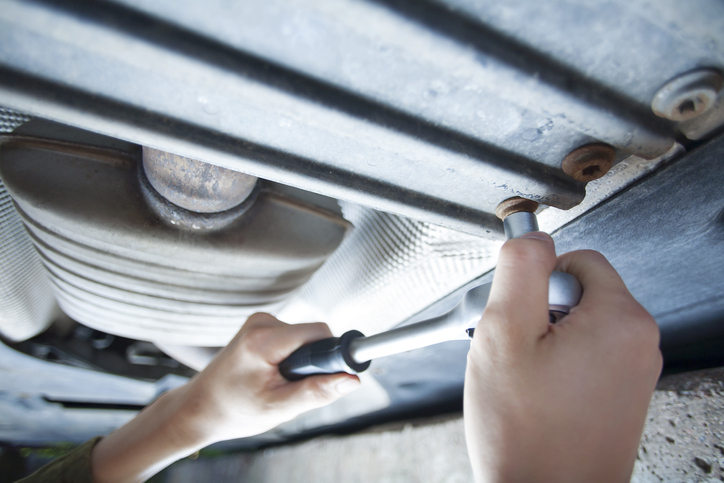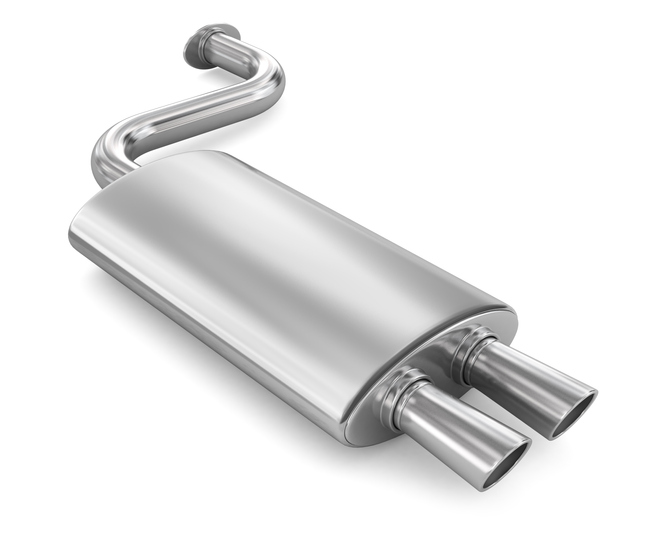
Whenever you hear a car without a muffler, it’s a swift reminder of just how important this device is for stifling noise pollution. Not only does a car cruising around town without a muffler enrage anyone it passes, but it can actually be considered an infraction to drive without one if the sound on a given vehicle exceeds the legally allowable noise level.
The muffler is the ultimate silencer, capable of turning the deafening roar of a car’s internal combustion engine into a soothing purr.
In existence almost as long as cars have been with us, let’s take a quick look at the interesting history of this brilliant little silencer!
From Silencing Motorbikes to Automobiles
If you’re training to be an automotive service technician, you’ll be interested to learn that the first muffler was actually engineered to silence the exhaust on one of the earliest American motorbikes, invented by Milton Reeves. Going on to become an important innovator in the automotive industry, Reeves designed and patented his unique silencing instrument in 1897.
The muffler was soon adapted to fit the exhausts on motorized automobiles, whose ear-splitting roars had become a menace to horses and townspeople in many communities.
Improvements to the Exhaust System to Cut Both Noise & Air Pollution
While the invention of the muffler was a great step forward, it was the invention of another important auto part that helped create what we now know of as the exhaust system. An exhaust system transports engine exhaust gasses through a system of interconnected pipes, as well as the catalytic convertor and muffler. The system is designed to minimize pressure drop which aids engine performance, and reduces noise levels while also continually trying to meet restrictive emissions for environmental standards.

Emissions can be thought of as both noise and toxic gas. The muffler’s capability for improving the car’s exhaust system by silencing noise emissions was complimented by the introduction of the catalytic converter, a separate component with its own unique function. The device was patented by the Frenchman Eugene Houdry in 1962, based on his desire to find a way to cut down on the toxic emissions caused by car exhausts of that time. Houdry turned to the catalytic process he’d already used to manufacture higher quality gasoline for both the aviation and automotive industries.
His catalytic converter is well-known to anyone in auto careers, as it was so effective at reducing toxic emissions that the innovation is still used today as a standard in auto manufacturing around the world for helping to meet cleaner air initiatives. Because the muffler and the catalytic converter are both such important components of the modern automotive vehicle’s exhaust system, and of complying with legislation on both noise and gas emissions, it’s important to keep both items well maintained.
The Later Stage of Mufflers Those with Auto Careers Should Know About
Today’s mufflers have continued to evolve from the invention’s earliest days, with the introduction of fiberglass, a notable change to effectively absorb additional engine noise. The turn of this century ushered in yet another significant improvement, with the introduction of electronic mufflers using noise-canceling technology.
Mufflers continue to evolve as automotive engineers try to improve performance versions of the device for the sports car niche, with these specialized muffler fits improving exhaust system efficiency, retaining engine power, and customizing pipe noise for a more thrilling pitch while falling within noise acceptance limits.
The modern exhaust system utilizing catalytic convertors, mufflers, and in some cases resonance chambers are tuned by car manufacturers to balance engine performance, noise and toxic gas emission levels, and even make your car sound better.
No matter how the muffler continues to evolve, it will always stand as one of the most important inventions in the automotive industry for cutting down on noise pollution.
Interested in learning how to diagnose and repair all kinds of car problems through a professional automotive school?
Contact Automotive Training Centres for more information on their professional auto mechanic careers programs!

